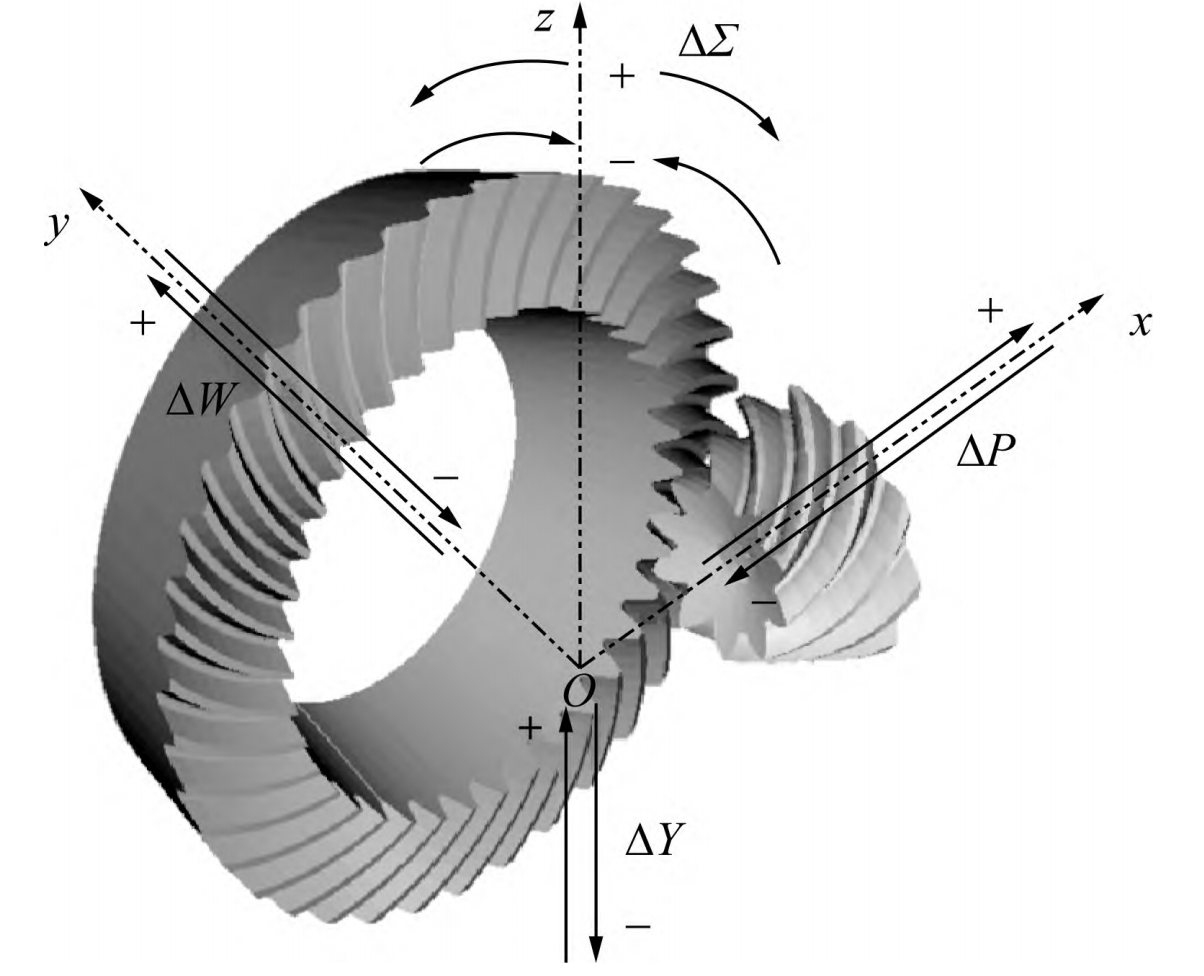Abstract:
This paper focuses on the optimal design of hypoid gear transmissions using a multi-objective genetic algorithm (MOGA). Considering the significant impact of hypoid gear volume on manufacturing costs and the effect of noise on ride comfort, an optimization model is established with the objectives of minimizing both transmission volume and noise while satisfying the load-bearing capacity. The results of a case study demonstrate a significant reduction in both transmission volume and noise compared to the original design.

1. Introduction
Hypoid gears are widely used in high-speed, high-load, and high-precision transmission systems due to their compact structure, high load-bearing capacity, long service life, and low transmission noise. However, they are often used in devices requiring large transmission ratios, which can lead to larger gear pair sizes and increased material costs. Traditional design methods rely heavily on experience, resulting in hypoid gears that are not always cost-effective or performance-optimal. This paper aims to optimize the design of hypoid gears to minimize both transmission volume and noise using the multi-objective genetic algorithm NSGA-Ⅱ.
2. Mathematical Model for Optimal Design of Hypoid Gears
2.1 Design Variables
Based on the volume calculation formula and noise calculation formula for hypoid gears, the independent parameters under a fixed transmission ratio are: number of teeth on the pinion (z1), large-end pitch diameter of the gear (de2), face width of the gear (b2), offset distance of the pinion axis (E), and spiral angle at the midpoint of the gear (β2). Therefore, the design variables are:
X = [z1, de2, b2, E, β2]T
Table 1: Design Variables
| Design Variable | Symbol | Description |
|---|---|---|
| Number of teeth on pinion | z1 | Independent parameter |
| Large-end pitch diameter of gear | de2 | Independent parameter |
| Face width of gear | b2 | Independent parameter |
| Offset distance of pinion axis | E | Independent parameter |
| Spiral angle at midpoint of gear | β2 | Independent parameter |
2.2 Objective Functions
The objectives are to minimize the sum of the volumes of the pinion and gear (V1 + V2) and to minimize noise by approximating the coefficient of contact (εF) to 2.
2.3 Constraint Conditions
Based on the characteristics and requirements of hypoid gears in actual production, the following constraint conditions are proposed:
- Number of teeth constraints
- Offset distance constraints
- Face width constraints
- Spiral angle constraints
- Contact fatigue strength requirements
- Bending fatigue strength requirements
Table 2: Constraint Conditions
| Constraint | Description |
|---|---|
| Number of teeth | 5 ≤ z1 ≤ 12, z2 ≥ 30, 40 ≤ z1 + z2 ≤ 60 |
| Offset distance | 0.1de2 ≤ E ≤ 0.2de2 |
| Face width | 4m ≤ b2 ≤ 10m |
| Spiral angle | 30° ≤ βm ≤ 50° |
| Contact fatigue strength | SH ≥ SHmin |
| Bending fatigue strength | SF ≥ SFmin |
3. Optimal Solution Based on Multi-Objective Genetic Algorithm
3.1 Multi-Objective Optimization Problem
In multi-objective optimization problems, there is no single solution that optimizes all objectives simultaneously due to conflicting relationships between objective functions. The optimal solution is usually a set of solutions known as the Pareto front.
3.2 NSGA-Ⅱ Algorithm
The NSGA-Ⅱ algorithm, proposed by Deb et al. in 2002, is a classic algorithm for multi-objective optimization problems. It improves search efficiency and convergence speed through rapid non-dominated sorting, crowding distance calculation, and elite strategy.
3.3 Optimization Process
The MATLAB function gamultiobj is used, which employs the controlled elitist genetic algorithm NSGA-Ⅱ. The optimization process involves setting the upper and lower bounds for variables, initial population size, number of generations, Pareto front coefficient, and crowding distance.
4. Case Study
4.1 Basic Parameters
Transmission ratio (i) = 4.1, number of teeth on pinion (z1) = 10, face width of gear (b2) = 30 mm, offset distance (E) = 20 mm, large-end pitch diameter of gear (de2) = 200 mm, spiral angle at reference point (βm2) = 37.14°.
4.2 Results
The Pareto front obtained from the NSGA-Ⅱ algorithm. The optimal solution is selected based on minimizing both volume and noise.
Table 3: Comparison of Parameters and Objective Function Values Before and After Optimization
| Design Method | z1 | de2 (mm) | E (mm) | b2 (mm) | βm (°) | Volume (mm³) | εF |
|---|---|---|---|---|---|---|---|
| Traditional | 10 | 200.00 | 20.00 | 30.00 | 37.14 | 2.8324×10^5 | 2.1552 |
| Optimized | 10 | 196.99 | 19.72 | 26.13 | 38.51 | 2.4725×10^5 | 1.9532 |
5. Conclusion
This paper presents an optimal design method for hypoid gears using the NSGA-Ⅱ algorithm to minimize both transmission volume and noise. Compared to the traditional design method, the optimized design reduces transmission volume by 12.7% and improves the coefficient of contact, resulting in lower noise. The proposed method improves design efficiency and reduces costs, providing a theoretical basis for subsequent design improvements and serving as a reference for the optimal design of other gear transmissions.
